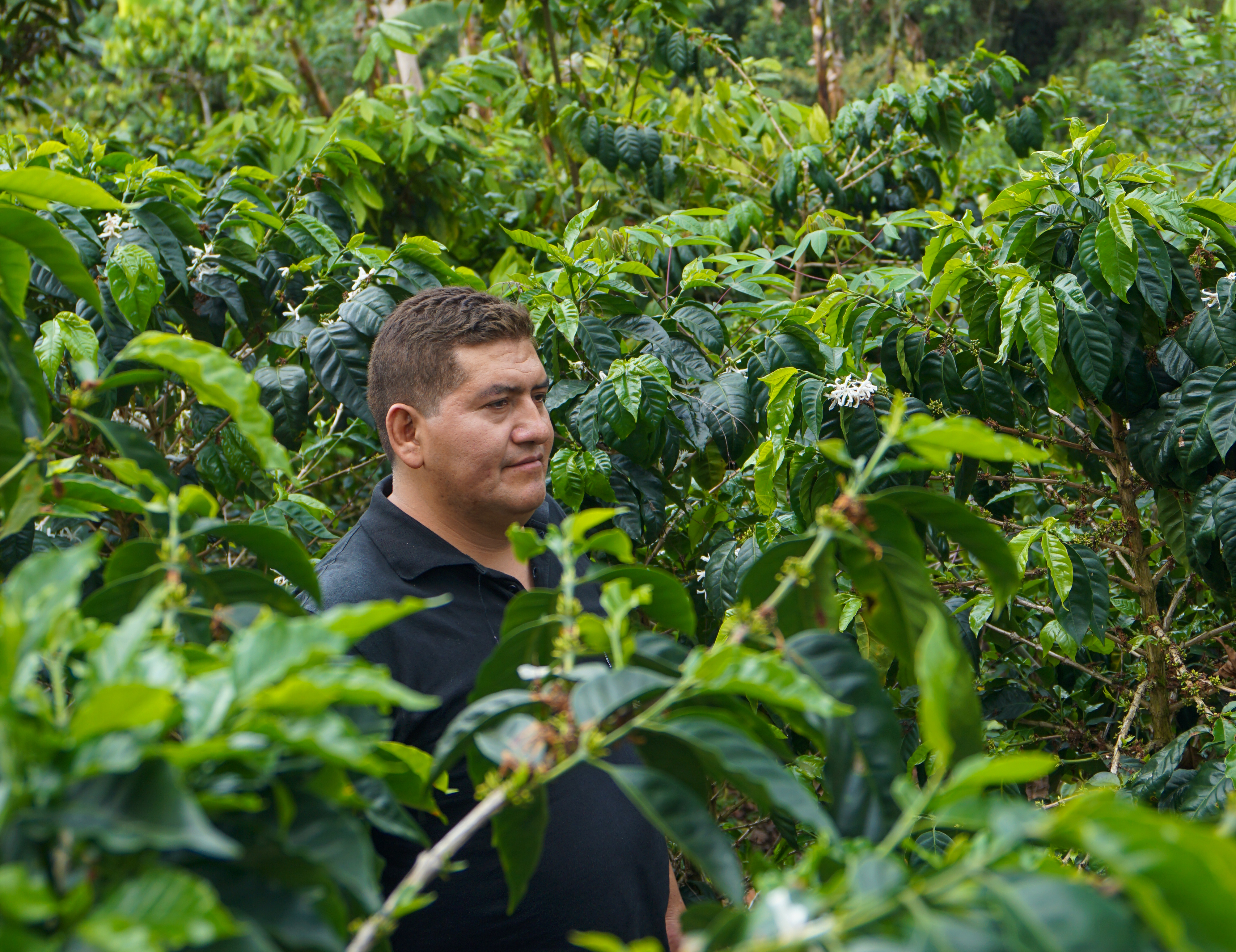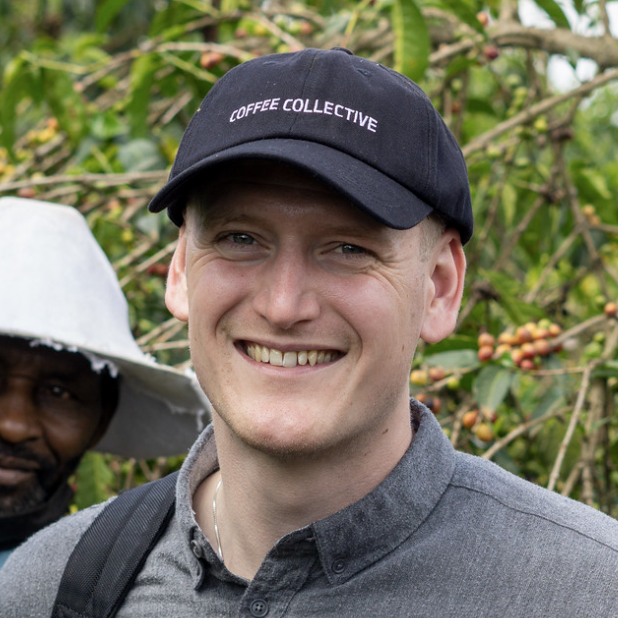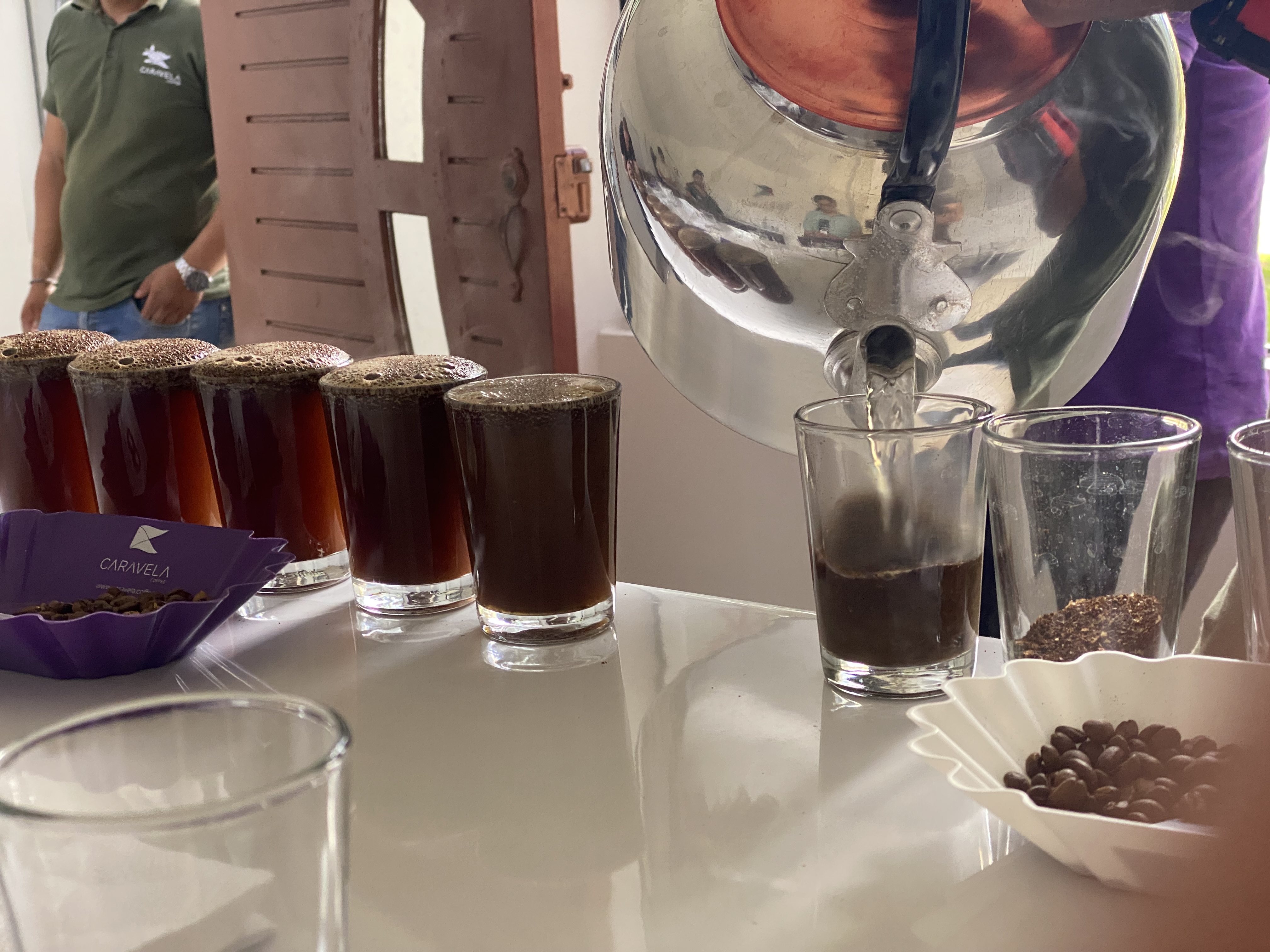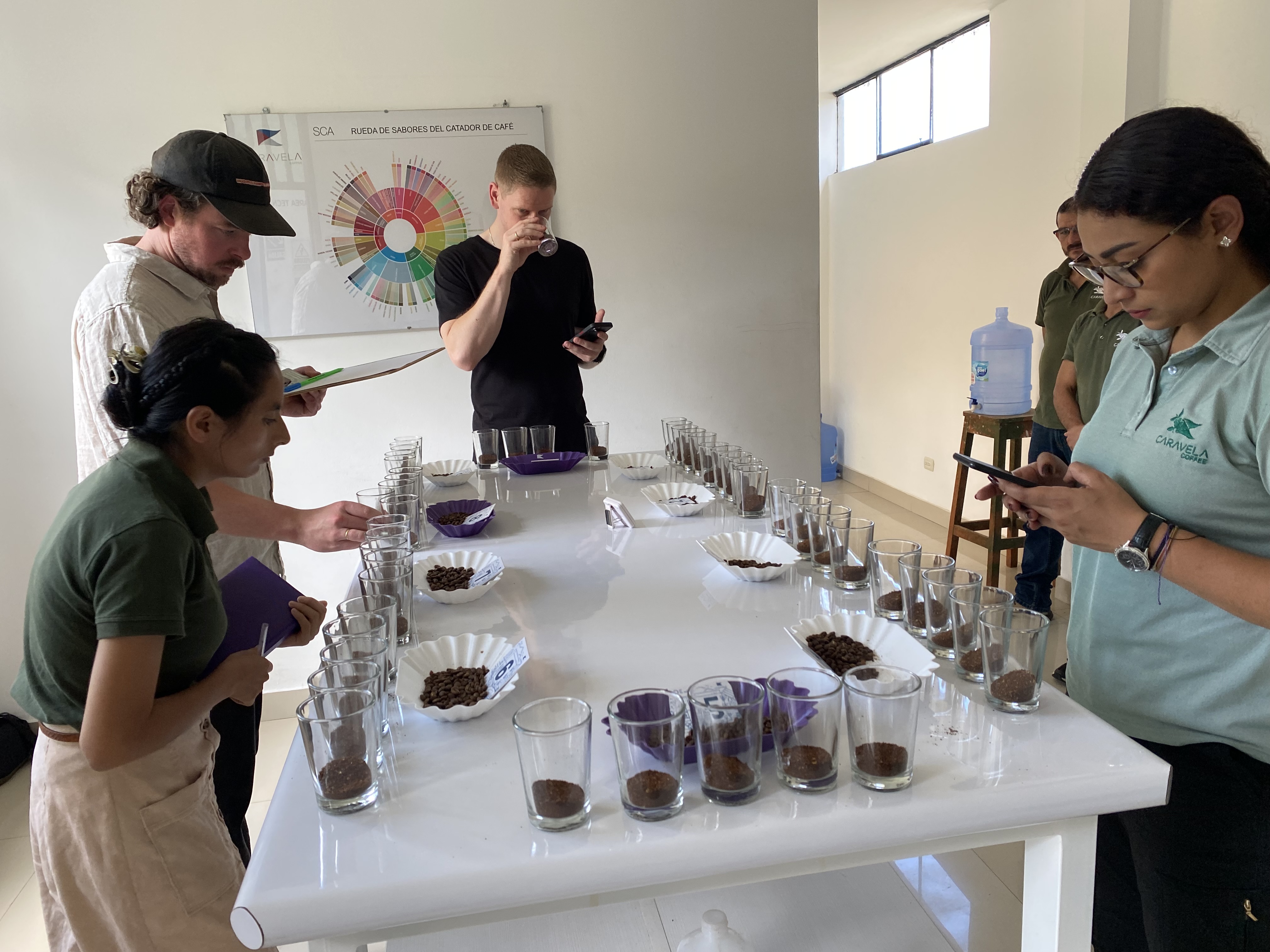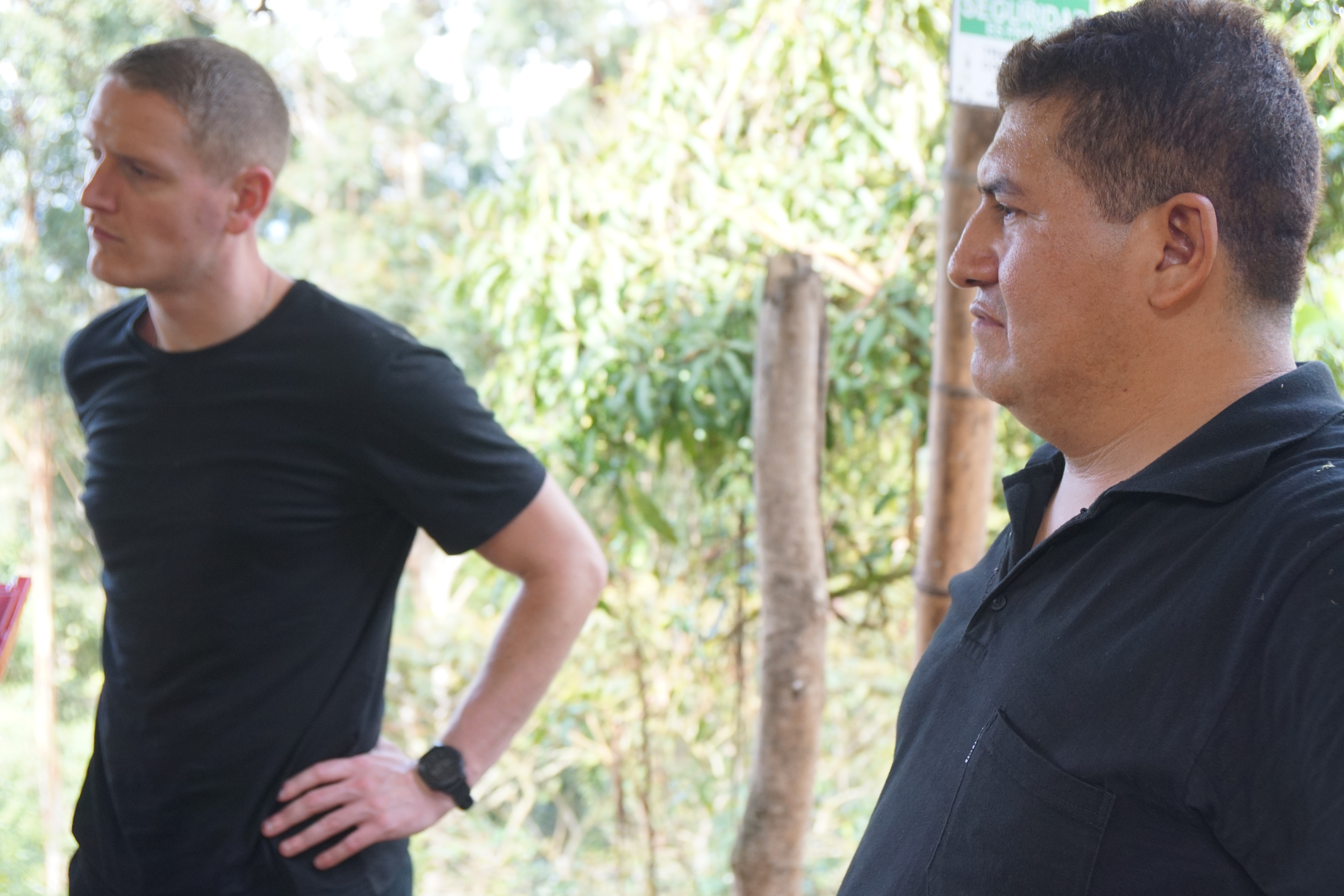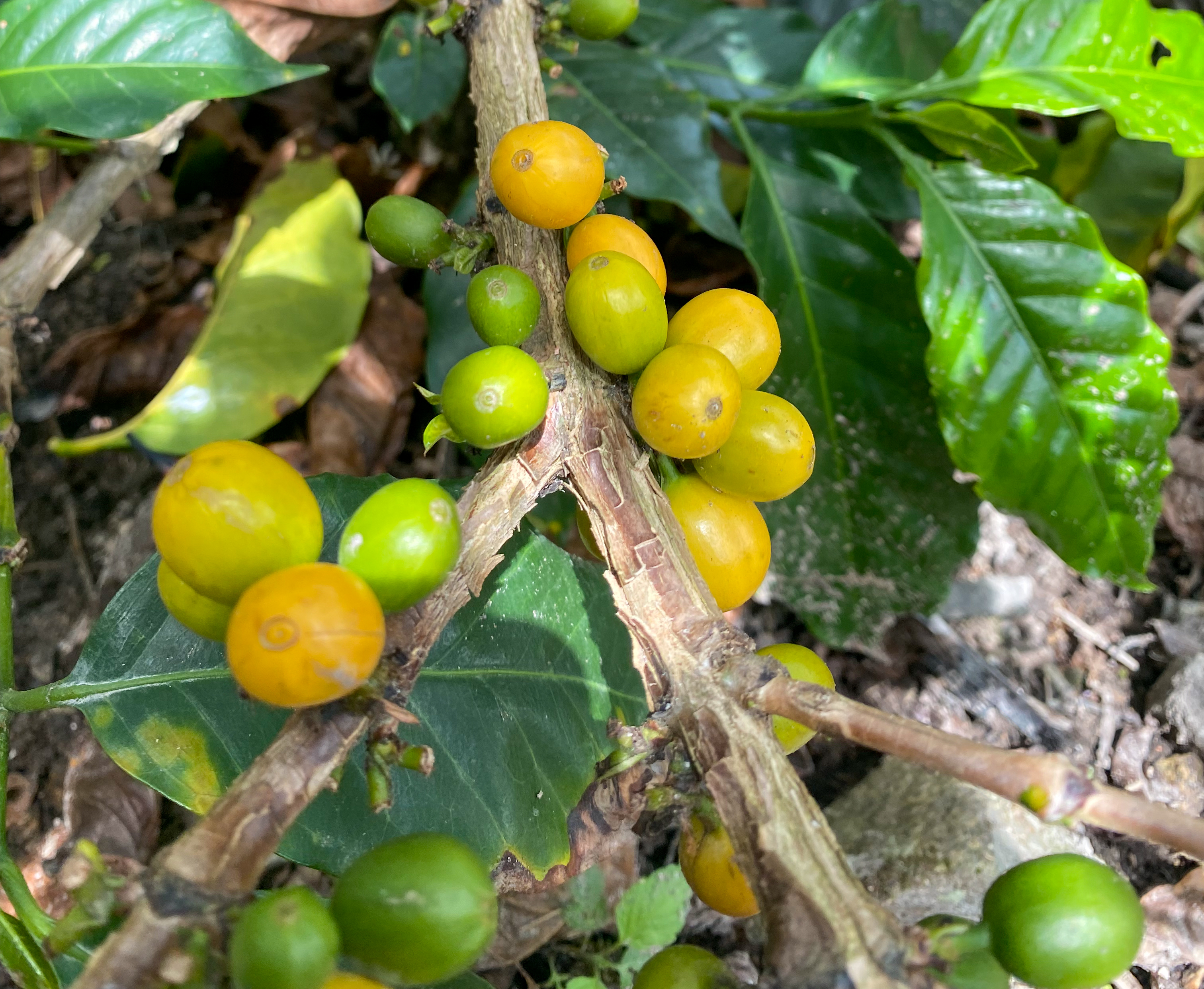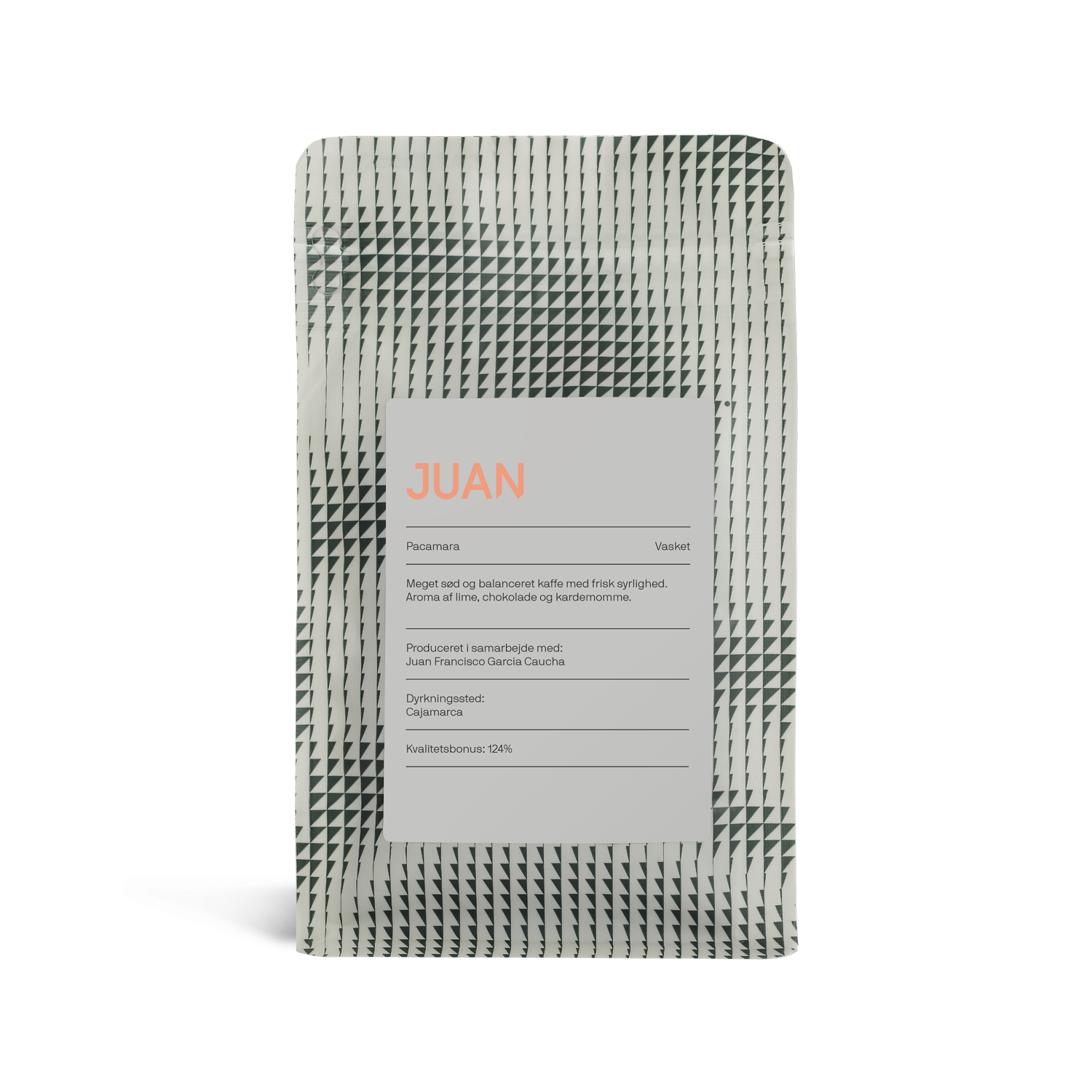Kian has made a journal that takes you on the journey of sourcing coffee from a new origin.
Day 1
After a very long flight, we finally arrived in Lima Peru. We arrived very late and went straight to the hotel for a good night's sleep!
Day 2
Early on the second day, we flew to Jaen. A short flight of about an hour. This felt for the first time like we had arrived in Peru. Beautiful landscape!
From the airport in Jaen, we travelled by car for an hour to our hotel. We drove through small villages. There was a 360-degree view of beautiful mountains all the way to the hotel. The first “real” stop at this origin trip was at Caravela. Caravela is an export firm that exports green coffee around the world. Here we were met by Anna Sofia and Stuart.
They gave us a tour of the warehouse, where they stored, quality controlled, and sorted out thousands of kg of green coffee. They had prepared big cupping for us, only with coffees from Peru. Some were coffees from farms we were going to visit the next couple of days.
The lineup was amazing! We had a cupping calibration to see if we scored the coffees with the same amount of points ( SCA point system). The whole Caravela team was super friendly and very professional! The coffees were amazingly tasty! I was very surprised by the quality of all coffee on the table.
One coffee stood out of the 18 coffees we blind-cupped. This coffee was a washed yellow Caturra from Nelson's farm. Peter and I were sure it was a natural processed coffee! It had all the signs of a natural – Very ripe fruit, heavier body, sweet and very juicy acidity. So, we were very surprised to hear after the cupping that it was a washed coffee.
We were going to visit Nelson the next day so it was amazing to try his coffee first, so we could ask about details later.
Day 3
We were picked up by a driver from our hotel very early in the morning. We had about a 3-hour long trip to Nelson's farm. It was a great way to see the landscape of Peru. After 3 hours we arrived 1 km out from Nelson's farm.
We would hike through his farm, all the way to his house. We were about 1,650 m up. I was very interested in the yellow Caturra we had tasted at Caravella the day before! He showed us the trees and told us he only planted yellow Caturra because he thought it has a higher cup quality. He had also some citrus trees, but he mainly had coffee trees on his farm.
What stood out to me when visiting his farm, was his professionalism. He oversaw everything, from how pickers should pick the overripe berries, but not put them with the ripe cherries to how many hours they should ferment in plastic bags. The amount of quality control was very impressive! He also planted a lot of shade trees called “Albisio”.
After We said goodbye to Nelson and his Wife Diedes Mida we continued towards our next visit – Violetta and Medardo. This farm was a bit smaller but also well-managed. The farm is part of Monte Grande, which is about 50 farmers, who deliver coffee to Caravela in Jaen. Medardo had struggled with a lot of rain this harvest. Due to climate changes, they had seen a big increase in rain and colder nights. This resulted in him losing about 50% of his harvest. On his farm, he only planted 100 % Patche variety.
He was showing us around his farm, when it suddenly, out of the blue started raining. He had a lot of coffee laying out on big black tarps for drying, and within seconds he had all beans covered with another tarp, strapped to form a “roof”. It was a very simple setup but a very effective way to do it.
The best coffee he dried on the roof. That gave him more control of the drying process.
Just like at the Nelson farm he fermented his beans in plastic bags. The reason behind it is easy to recreate. Meaning you can get the same fermentation repeatedly. Madardo ferments his coffee for 4 days in plastic bags after he washes them and then finally dries them for about 21-25 days.
Just like at Nelson's, Medardo knew how to improve the quality of his farm. He has many dreams and aspirations for the farm in the future. The first thing on his list is having a bigger place to dry the coffee.
Very tired we went back to the hotel to recharge for the next day's farm visits.
Day 4
We got up early as we were travelling a bit longer and higher in the mountains this day. We were going to visit Rosa Megos farm. Rosa Mego is also a part of Monte Grande and delivers coffee to Caravela. In 2002 there was a program about specialty coffee and after attending that she started working towards getting the coffee quality up. In 2008 she was in full action growing specialty coffee.
She managed the farm with her husband Segundo Olivera and their son Juan. Rosa would oversee the fermentation of the coffee. With the guidance of Caravella they, just like Nelson and Medardo started fermenting the beans in plastic bags.
She will do two different fermentation times, depending on the variety.
1) She depulps the coffee and ferments the coffee for 12 hours. After that, she washes the leftover mucilage off.
2) She ferments the coffee for 30 hours and this time, she washes the coffee three times. She does a 30-day shaded drying period. At the farm, they have Caturra, Geisha, H1 and Catimor varieties.
After a small launch at the farm, we were off to our next farm - Juan Francisco.
As with the other farmers, we started out with a guided tour around his farm. A beautiful farm but different from the others. All farmers we had met had a natural forest floor around the farm and trees.
Juan had removed a lot of the natural vegetal and replaced it with “Frijol”. Which means beans in Spanish. The reason for this was to get the pH-level in the soil down. He also used coffee pulp and humus as fertilizer.
On his farm, he has Parcamara, Maragohype, Caturra, Patche and a newly planted 0.5 hectare of Geisha.
Just like the other farms that we visited he ferments his coffee in plastic bags. A cool thing that Juan bought is a special depulping machine. He needs this new depulper because his Parcamara cherries were too big for a normal depulper. The new machine could also screen size and remove the mucilage.
The good thing about the machine was that it needs very little water to function. After the cherries has been depulped, he then does a 30-hour fermentation in plastic bags. After 30 hours he will wash the coffee up to 4 times until there’s no sugar layer left. Then he dries the coffee for 25-30 days.
Overall, I am very excited about our new relationship with the farmers in Peru! Not just because of the high-quality coffee, but also because of the amazing people working at the farm. I can’t wait to get the coffee in Copenhagen!
You might also like
Would you like to get our different coffees delivered directly to your doorstep? We've got you covered.
Address
Coffee Collective
Godthåbsvej 34B
2000 Frederiksberg
CVR: 30706595
Contact
mail@coffeecollective.dk
+45 60 15 15 25 (09.00-15.00)
Coffee and cookies
This site uses cookies.
Find out more on how we use cookies.
